#Erythrin
Explore tagged Tumblr posts
Video
Erythrine by Harald Biecker Via Flickr: Erythrine crystals from Bou Azer in two generations; FOV 8 mm, stacked with helicon Focus Erythrinkristalle in zwei Generationen, Aghbar, Bou Azzer Marokko, BB 8 mm; gestackt mit Helicon, Nikon D7000 an Nikon Balken auf Stackmasterschlitten mit Componon S 50.
#Mineralien#minerals#Micromounts#Macro#Marokko#erythrine#crystals#Kristalle#dofstacking#focusstack#Helicon#Nikon#D7000#Bou Azzer#Erythrin#Kobaltblüte#Helicon Focus#flickr
2 notes
·
View notes
Note
Hi! I was wondering if you knew or had any sources on pigments in corn snakes? It's my understanding that they get a lot of their red/orange/yellow pigment as they mature, from the carotenoids in their prey, but also I know they can still have some red coloration even freshly hatched, so... what's that coming from? Do we know what exact pigment (or pigments?) it is that they're producing? I've seen "erythrin" mentioned, but I've been struggling to find any information about it
Hey friend!
Corn snakes have three pigments that they express: melanin (black), xanthin (yellow), and erythrin (red), which you've pointed out!
All corn snake color morphs, including wild type coloration, are based on the expression and/or mutation in the expression of these three pigments.
Babies often hatch a bit redder and their colors deepen as they age. We call this "baby red" and it usually settles to brick red or rich brown by the second or third shed.
It's also common for some red and pink morphs to start to express as the snake matures. Red Factor, Redcoat, Peach, Hypo, and Bloodred morphs tend to start out looking kinda "normal-ish" and get redder/brighter orangey with age. Some keepers have even suggested that some reds are sexually dimorphic, with males displaying more red/pink tones than females and displaying brighter colors during breeding season.
The carotenoids that show up over time from food are often expressed around the jaw/neck. These can still be masked by some morphs that block both erythrin and xanthin expression, like the Charcoal (anery B) morph. Anery (anery A) will block erythrin but not xanthin, so Anery morphs often still get yellow around the jaw and throat. Genetic morph red pigment expression will generally be across the entire body and possibly also fill in the white belly checkers in some cases.
There are a lot of scholarly articles on the subject as corn snakes are a model species for snakes in genetics, so if you're searching you might want to use their scientific name: Pantherophis guttatus. This should generate more results than the common name if you're using Google Scholar or ResearchGate.
I hope this is a helpful primer and I wish you better luck with future searches for more information!
#snake#snakes#reptile#reptiles#reptiblr#corn snake#corn snakes#corn snake morphs#answers to questions#text post#long post
23 notes
·
View notes
Text
Kenyan Sand Boa Breeding Pairs (2025)


Cherche x Creamsicle Paradox Albino x Paradox Albino Stripe
Read a brief write up about the pair and expected offspring (here) or continue below for a very extended version.
This is more for my record keeping but may be a fun deep dive if you're interested!
My only expected pair for 2025--and my first breeding of any snakes ever! A childhood dream of mine coming to fruition :)
Mutations
Firstly, I want to break down their genetics (and possible genetics) for those not familiar.
Paradox Albino
Paradox Albino is a simple recessive mutation. There are two lines of Albinism in Kenyan Sand Boas--Bell and Paradox. Albinism is attributed to the lack of melanin in an animal's body. Paradox Albinos are aptly named because they are lacking melanin, while actively displaying it in the form of black patches and spots. In other species of snakes, Paradox is a random trait and cannot be bred for, in Kenyan Sand Boas that is not the case!
Stripe
Stripe is a dominant mutation that originates from Rufescens Sand Boas, which have been heavily mixed with Kenyan Sand Boas. Unfortunately, there are not many purists that have preserved "pure" East African Sand Boas. Majority, if not almost all of them being sold in the United States are heavily mixed. Stripe is true to its name and individuals that possess this mutation will have one long, solid stripe from neck to the tip of their tail.
Stripe, being a dominant trait, only needs to be passed down by one parent to be visually expressed in the offspring. Offspring that do not get that gene from their parent do not possess the gene at all. Dominant genes are best described as 'you have it or you don't.'
Stripe, when combined with Paradox Albino, will reduce the size of the Paradox blotches to tiny specks.
Anerythristic
Anerythristic is a simple recessive mutation, attributed to the lack of Erythrin which is responsible for red and orange coloration. Animals that possess two copies of this gene will be black/brown and white in coloration.
While neither of them show it, both Cherche and Creamsicle have the possibility of being heterozygous (carrying 1 copy) for Anerythristic. I'll get into their parents' genetics and predicted offspring in a bit, but the likelihood is about a 66% chance that Cherche carries a copy and about a 66% chance that Creamsicle carries a copy. There is no way to tell if either individual in my pair actually carry this gene unless it is proven in their offspring. The likelihood that they both carry this gene is very small but if they somehow did, none of the babies would be black and white. We shall also get into this in a bit!
Paradox Snow
Snow refers to the combination and expression of both Albinism and Anerythristic. This means that both parents must pass down one copy of both genes (for a total of 4) to be properly visually expressed. When Paradox Albino and Anery is combined in this way, a Paradox Snow is produced! A yellow and white individual with dark blotches in their pattern. Gorgeous!
Predicted Offspring Mutations
Since Cherche and Creamsicle are both visual Paradox Albinos--all of their offspring will be Paradox Albino as well. Because Creamsicle has the dominant mutation Stripe--their offspring each have a 1 in 2 chance of being stripe themselves. In short, sweet, and simplified terms half of the litter will look like Mom and half will look like Dad!
Now, into the more confusing probability. Both snakes are each 66% possibly heterozygous for Anerythristic. That number does not relate at all to their offspring, just the specific chance that individual snake might contain that gene. In realistic terms, they either carry a copy of that gene or they don't. The only way to find out if they carry it is through proving them out by breeding and the outcome of the offspring. The chance that they both carry 1 copy of Anery is unlikely--but its still possible!
If neither of them carry Anery, or either one of the pair carry Anery--the babies will all be Paradox Albino and Paradox Albino Stripes.
If they so happen to both be carrying the gene for Anery, each baby has a 1 in 8 chance of being a Paradox Snow or a Paradox Snow Stripe. So the litter would contain Paradox Albinos, Paradox Albino Stripes, Paradox Snows, and Paradox Snow Stripes.
The reason that none of them would be a visual black and white Anerythristic is because both parents are Albino. Albino to Albino creates all Albino--genes can be added but Albino can not be taken out of the equation. Snow is Albino + Anery! :)
Parent Info and Variable Expression
Paradox Albino is one of the more exciting mutations in that the expression of the Paradox spots are extremely variable. Even when line-breeding, offspring can be few-spotted and they can also be extremely spotted! High Expression Paradox (more spots) are more desirable. The color vibrance is also something that is variable, with a more vibrant/neon orange being more desirable.
Cherche and Creamsicle are from the same parents, but two different litters. Inbreeding in moderation is an acceptable practice for many snake species. Their parents are unrelated, sourced from different collections. Cherche and Creamsicle were produced by Leslie Miller of Miller's Exotics.
Their mom is a large Paradox Albino het. Anery, pictured below. She was produced by Evan Stahl. Photo credit Miller's Exotics.

My favorite things about her are:
High Expression Paradox spotting.
Bigger blotches of Paradox spotting, instead of smaller dots.
Very light off-white background color (No silvering/green appearance)
Reduced/lifted side patterning.
Their dad is a Paradox Albino Stripe het. Anery, pictured below. He was produced by Scott Miller. Photo credit Miller's Exotics.

My favorite things about him are:
High Expression Paradox spotting
Thick dorsal stripe
Now let's take a look at Cherche and Creamsicle again!

Obviously there are differences in lighting between their parent pics and the ones I have taken.
They have taken heavily from their mother, especially Creamsicle. Creamsicle has a much lighter background color, you can see the difference when compared to Cherche. They have both taken that brighter orange color from their mother as well. Cherche has more of her dad's background color. The vibrance in their color is one of my favorite things about them!

Taking a look at their side profiles gives some different insight about their traits. Cherche has inherited those reduced/lifted side patternings. You can see a lot of her beautiful orange background color from the side than you can from the top. From inheriting mom's white background color, you can really see the gorgeous orange specking on Creamsicle's sides. They creep up from his belly scales like little embers. This speckling is something his dad has too but is very hard to appreciate because he is a very similar colored orange all over!

While they are not as high expression Paradox as their parents, this does not mean that their offspring will not be high expression! The variability of the mutation and lineage plays a major part. Their parents and some of their siblings being higher expression bodes well to the chance for them producing same or high expression offspring.
One other thing I would like to note is color change over time. Kenyan Sand Boas go through a slight color change as they get older. Let me show you Cherche and Creamsicle's baby pictures!


Creamsicle is a bit older in his photo and overall doesn't seem very changed--but look at Cherche! They do start out quite a bit paler and get vibrant with age!
These pictures are also a great example of what their babies will mostly look like!
Temperament
Both Cherche and Creamsicle are hands down my friendliest snakes. Their good temperaments are what I am hoping to pass down in their offspring.
I always feel its important to note how you handle snakes will directly impact their reactions to you. If I pick up either of them the wrong way they will get very wiggly and try to run away. Kenyan Sand Boas prefer to be supported in your arms rather than be grabbed or slither through your fingers, especially the big girls! That all being said, these two are extremely curious and love to interact with me and their environment.
They are both extremely chill and have never struck at me defensively or mistakenly identified me as food. Cherche loves to be held in my arms like a baby and will rest her head over my shoulder and sniff around my hair. Creamsicle is a sleeve/hood snuggler. Creamsicle's favorite interaction activity is sniffing my hands after I get home from work and will do so for hours if I let him. I sit at my desk with my hand in his tub lol. If I don't he will sit towards the lid at the front of his tub waiting for me to open it.
Whoever said Kenyan Sand Boas are boring or are just pet rocks doesn't try to interact with them much or listen to what they like!
I will be raising the babies for hopefully a few months before they go to new homes, so they will be fairly well started on some choice based handling and positive interactions. And I will have some good inclinations on their individual personalities.
Voracity
Both Creamsicle and Cherche are fantastic eaters on frozen thawed mice. I am expecting their offspring to have just as good of appetites. There's always the chance that a few babies will come out not willing to eat, or only want live--these animals will not be sold.
The only time I've ever noticed refusal of food has been recently with Creamsicle due to him being a bit desperate for ladies. At the time of writing this they have already been paired and there has been a visual lock!

Cherche is quite a ham and may be a bit over conditioned (mostly due to getting Creamsicle's uneaten extras). But hopefully a nice healthy litter will use all those extra nutrients. Plus it'll give Cherche a nice buffer in the case she has a larger than expected litter.
I prefer drop feeding over tong feeding. Drop feeding is essentially I put the food item in their cage and walk away and they will come and find and eat it. Kenyan Sand Boas are not always the best at this and will wait for the food to come to them. But I like to encourage a bit of enrichment and I feel it detaches them from associating me with food--I find that they will usually have less of an immediate food response when I open their tub when I feed this way. For most of mine I can reach in their tub without worrying I'll get bit or thought of as food.
Will Offspring be Available?
This firstly depends on how many babies Cherche has. Average litter size is 6-15 babies but it can be more and it could be less. As a first time mom, her litter is more likely to be on the small to average size.
In Warren Treacher's The Sandboa Book, from several years of testing he found that the female's weight before breeding has some merit in what the average litter size may be. He found for every ~28-32 grams of body weight, it equals one baby. Cherche's pre-breeding weight was 410g. Dividing that number by 28 and by 32 we get an average litter size of 12-14 babies. Cherche's litter that she was born in was a size of 13 babies, Creamsicle's litter was 14 babies. So this estimation is just on par with the size of their mother's litters.
I do have a few people locally who are interested in getting a baby. If you are in the United States and may be interested as well please privately message with me or ask to be put on a waitlist. I live in Northern New Jersey so if you are in my area I am happy to do a local pick up to avoid the price and stress of shipping! Please note if you are living in New Jersey, a permit is required to own exotic species which is info I can provide for you and help with. If you are not in NJ please make sure this species is legal for you to own or if you live in a permit or restricted state!
I will be posting to here and Instagram with updates about Cherche's pregnancy and all of the babies. If she ends up with an extremely small litter I will probably not have any to offer. But if everything goes well they will be paired again in another year or two. If you are looking to get a Kenyan Sand Boa sooner than that I can recommend some great breeders who are wonderful to work with.
Price
Price is extremely variable when it comes to Kenyan Sand Boas and it depends on sex, mutations, gene expression/attractiveness, and availability. If you have never browsed on MorphMarket, I would give it a look! You can get a pretty good idea of what people price their animals for.
Female snakes, high expression, more genes, and less available genes are always priced more. Price can go down for animals that aren't fit for breeding--whether its fertility issues, minor deformities, runt of the litter, etc. The other thing that can effect price is new breeders vs experienced breeders, or breeders that value the work they put into the lines they work with.
As of November/December 2024:
For Paradox Albinos, the average price I see is between $100-250 with the higher end or more for very nice looking animals.
For Paradox Albino Stripes, the average price I see is between $150-300, with again, the higher end or more for very nice looking animals.
For Paradox Snows and Paradox Snow Stripes I see an average price of anywhere from $175-350 or more depending on expression.
As of right now its hard to say what I will be pricing any offspring at until they're actually here and doing well but the above should give you a good inclination if you think you may be interested. Until I get established as a more experienced breeder I will happily accept offers within reason.
Please keep in contact with me while we wait to see if Cherche takes for her first year! My DMs are always open!
Update! 12/11/24
I brought Cherche and a few of the girls to work with me to do some experimental ultrasounds. Cricket and Campbells did not have any follicles as expected which was a good comparison for Cherche--

Look at those gorgeous follicles! Look forward to an update in a month or so when I bring her back to compare and see if they've grown or have evidence of life!
#snake#sneks#kenyan sand boa#my snakes#reptile#eryx colubrinus#my snek#sand boa#reptiblr#snekblr#snake breeding#snakes#snakeblr#snakes of tumblr#snek#boa#sandelion 2025#2025#2025 breeding season#cherche#creamsicle
13 notes
·
View notes
Text
THUỐC DƯỠNG TÂM AN THẦN - VÔNG NEM (Hải đồng bì, Thích hồng bì-Folium Erythrinae)
Dùng lá tươi hoặc phơi khô, bỏ cuống của cây Erythrina variegata L. Họ Đậu – Fabaceae. Ngoài ra còn dùng vỏ cây, cao bỏ lớp vỏ thô bên ngoài, rửa sạch thái mỏng, phơi khô. Hạt sao thơm. Tính vị: lá và vỏ cây vị đắng, chát, tính bình. Quy kinh: vào kinh tâm. Công năng chủ trị:
An thần thông huyết, dùng để trị mất ngủ, có thể kết hợp với lá sen (siro lạc tiên); hoặc lấy lá non nấu canh ăn.
Tiêu độc, sát khuẩn, dùng lá tươi giã nát đắp vào mụn nhọt; còn có tác dụng lên da non, chữa sốt, thông tiểu. Hạt trị rắn cắn.
Chỉ thống: vỏ cây dùng chữa phong thấp, cước khí, đau lưng chữa lỵ, chữa cam tích ở trẻ em. Liều dùng:
Lá, vỏ 8 - 16g.
Hạt 3 - 6g.
Trẻ em dùng 3 - 4g (vỏ). Chú ý:
Tác dụng dược lý: alcaloid erythrine, có trong lá và thân, làm giảm hoạt động của thần kinh trung ương, chất migarin làm giãn đồng tử. Lá vông còn có tác dụng ức chế thần kinh trung ương, hạ nhiệt độ, hạ huyết áp. Phạm Thanh Kỳ và cộng sự thấy alcaloid từ vông nem có tác dụng hạ áp.
NguyênLiệuLàmThuốc #ThuốcDưỡngTâmAnThần
0 notes
Text
0 notes
Photo
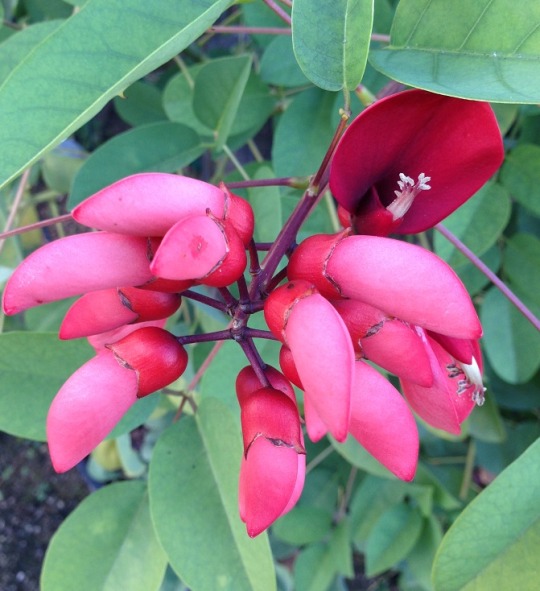
🌱L'arbre corail ou Erythrina est un arbuste produisant de magnifiques fleurs roses en été. Les graines de l'Erythrine crête de coq sont rouges et servent à la fabrication de bijoux ethniques. Très bel arbuste à découvrir. Graines actuellement disponibles sur le site ethnoplants. #erythrine #erythrina #arbre #corail #arbrecorail #coraltree #coralplant #cretedecoq #fleur #fleurs #floraison #arbuste #ethnoplants #flower #flowers #arbustes #arbres #arbol #arboles #arboldecoral #plantecorail #jardin #jardinage #jardiner #graines https://www.instagram.com/p/Cp0YPT9o6GE/?igshid=NGJjMDIxMWI=
#erythrine#erythrina#arbre#corail#arbrecorail#coraltree#coralplant#cretedecoq#fleur#fleurs#floraison#arbuste#ethnoplants#flower#flowers#arbustes#arbres#arbol#arboles#arboldecoral#plantecorail#jardin#jardinage#jardiner#graines
2 notes
·
View notes
Photo
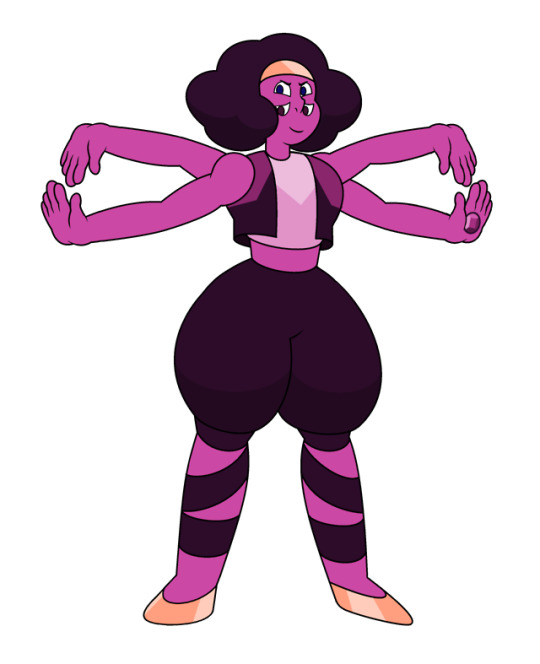
🎀 Erythrine 🎀
Lapis Lazuli / Ruby
126 notes
·
View notes
Text
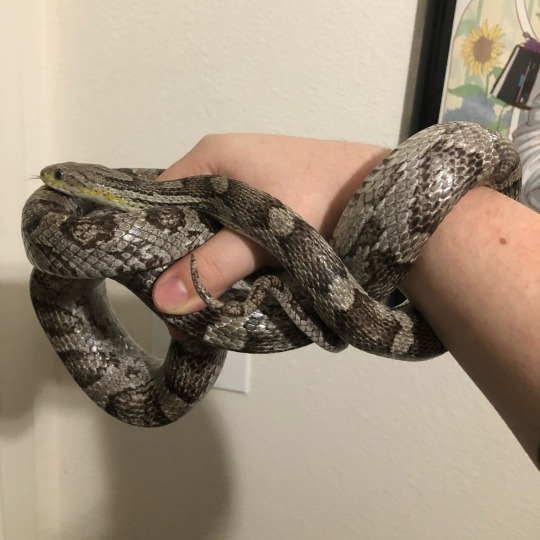
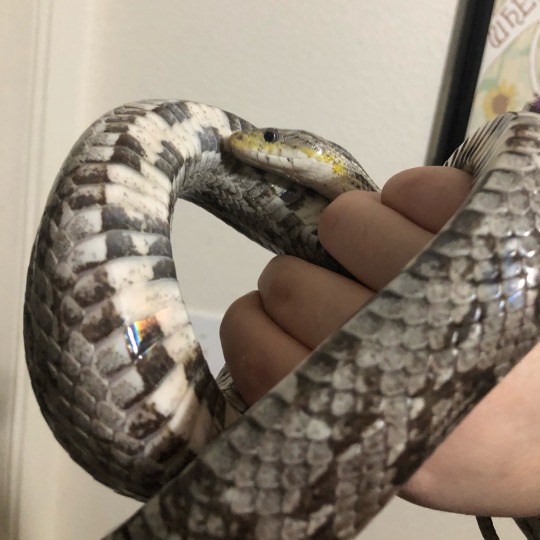
I love his lil yellow cheeks 🥺 if you can’t make your own erythrin pigments, storebought is fine
#Beebo Ju#anerythristic corn snake#‘s have a mutation where they don’t have red/yellow/orange pigments but because they eat mice#the carotenoids in those mice can turn their cheeks and chins yellow#corn snake#snakeblr#reptiblr#pet blog
12 notes
·
View notes
Note
I just wanted to check - there are albino corns, right? I know there are Snows and Blizzard morphs. Snake Discovery did a corn snake hatching vid recently and seemed to think there were no albino corn snakes, so I was a little confused. (They also didn't know the difference between Tessera, Motley, and Stripe though so I think they are just generally uninformed)
Hey friend!
I think the source of confusion here is that the term "albino" is a colloquialism developed for humans that doesn't totally work for reptiles.
The root Latin word, albus, just means "white." The term albino was originally coined by Portuguese and Spanish colonizers (boooo!) to refer to the children of Black slaves who were born without melanin. It then went on to describe any animal without pigment, particularly the black pigment melanin, which resulted in white hair, pink skin, and pink or very light blue eyes.
As science marched on and we gained a better understanding of how genetics and pigment work, we came to realize that there are multiple pigments at play in most animals. Even humans, whose main pigment is melanin, have two different kinds of melanin which result in the rich diversity of skin tones across the human species! Albinism works as a descriptor for humans because we only have melanin, but it falls apart fast when we start applying it to other forms of life.
So in corn snakes there are three main pigments: melanin (black), erythrin (red), and xanthin (yellow).
An amelanistic, or Amel, corn snake is by definition an "albino" with no melanin and red eyes. But they look like this:

That doesn't exactly look white...
If we're looking for white snakes to call albino, a Snow corn snake has amelanism and anerythrism in combination, but they still have yellow xanthin pigment. A Blizzard, on the other hand, is a combination of amelanism and a slightly different mutation called Charcoal that removes both erythrin and xanthin. By the original intent of the word, a Blizzard would probably be an "albino" but a Snow might not fit the bill. Or might, depending on who's deciding, since they technically lack melanin!
To bring up another example of pigment mutations, leucism is the absence of all pigment, not just melanin. This mutation is most commonly found in birds and reptiles. Leucism and albinism look similar, and the mutations do similar things from a "looking at animals on the outside" perspective, but they're genetically distinct from each other!
It falls into semantics and discourse, so I think the easiest way to go about it is to think of albinism as a blanket term to describe a range of genetic color morphs found in mammals, but not a scientific description of what's actually happening. We could probably skip using it to describe reptiles because even when it's technically applicable, it's not the whole story.
I'll end this by saying that YouTubers in general are entertainers, not educators, and I don't think I'd take anything any of them say seriously unless they're providing references. Snakes are a huge and diverse group of lifeforms, and even if one were to know every detail there is to know about one species, that knowledge may only tenuously apply to even a similar-looking species.
This is exactly why exotics veterinarians are expensive and why you should treat them very kindly and with a great deal of respect.
#snake#snakes#reptile#reptiles#reptiblr#corn snake#corn snakes#corn snake morphs#albinism#zoology#biology#answers to questions#text post#long post#oh i'm sorry did you want an answer here have a novel
212 notes
·
View notes
Text
Some Micro-Mounts from the Rock collection
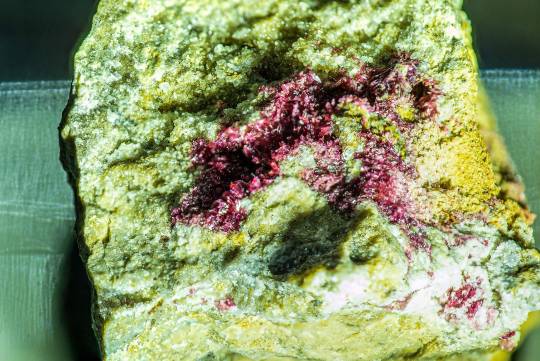
Erythrin found in Alpbach, Austria, found 1986
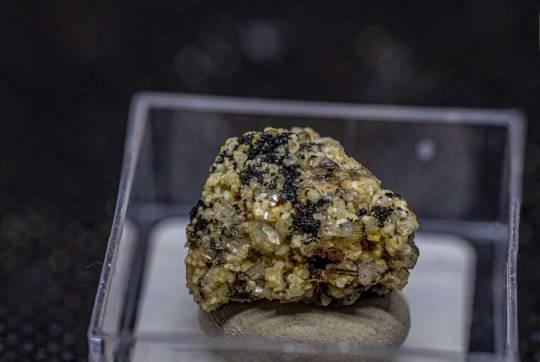
Anatas, Brookit from Grauleiten, Austria, found 1983
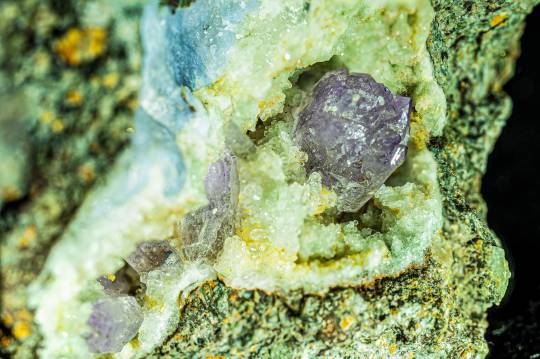
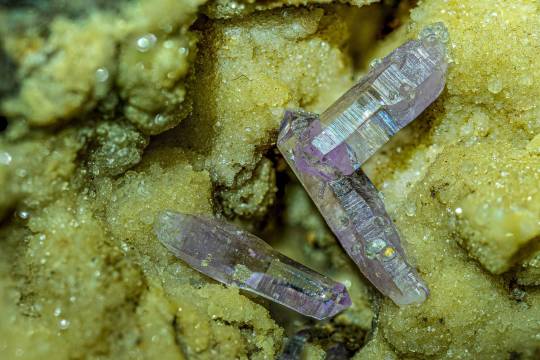
Amethyst and Calcite from Grube Clara, Germany, ca 1991

Rutil and others, Ankogel, Austria 1982


Unlabeled, Brixlegg, Austria, 1987
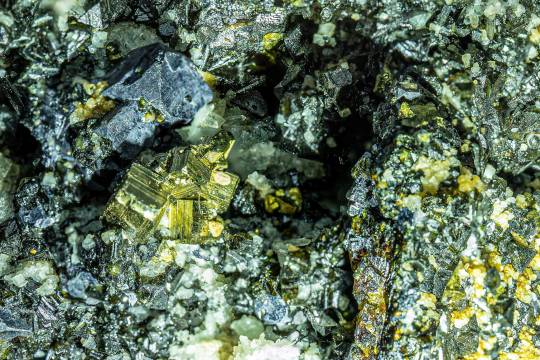
Pyrite and Hematite, Brixlegg, Austria, 1987
#rocks#rock collection#my rock collection#micro mounts#these are older than I am#minerals#mineralien#geology
3 notes
·
View notes
Photo
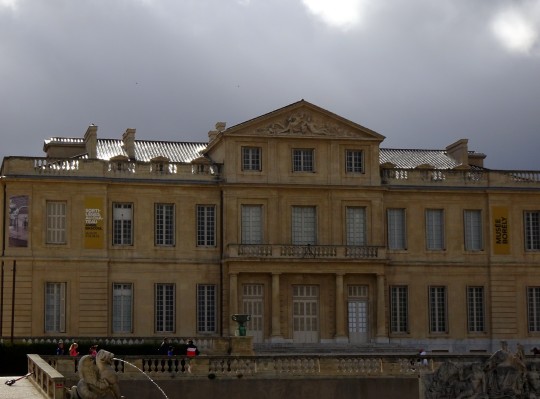

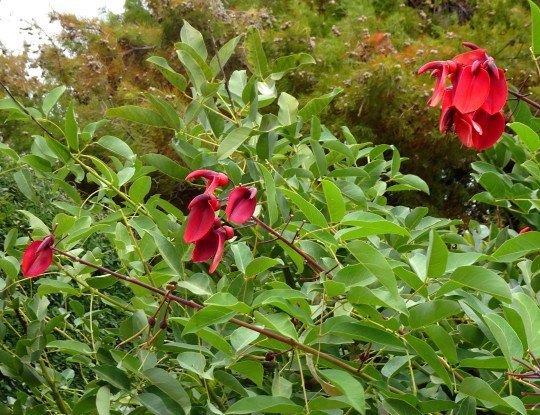
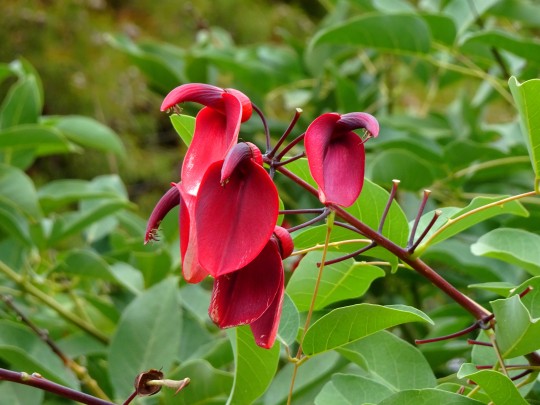
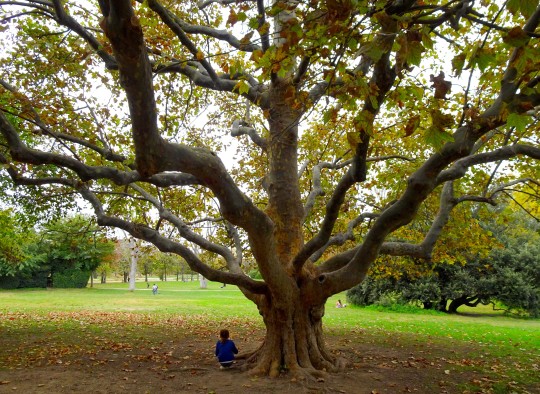
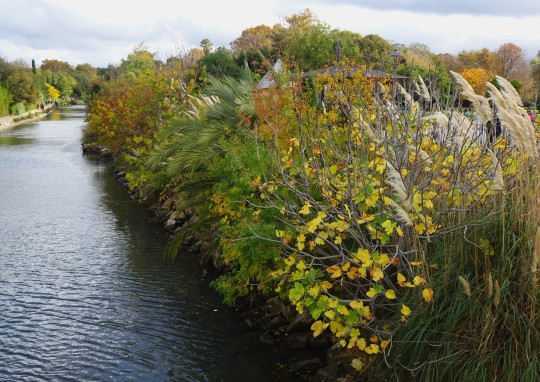
Marseille.
La bastide Borély et son parc, bordé par l’Huveaune.
L’étrange plante à fleurs cornues rouges est une Erythrine crête-de-coq (Fabacées). (bon il y avait un panneau à côté, qui expliquait tout ça...)
1 note
·
View note
Photo
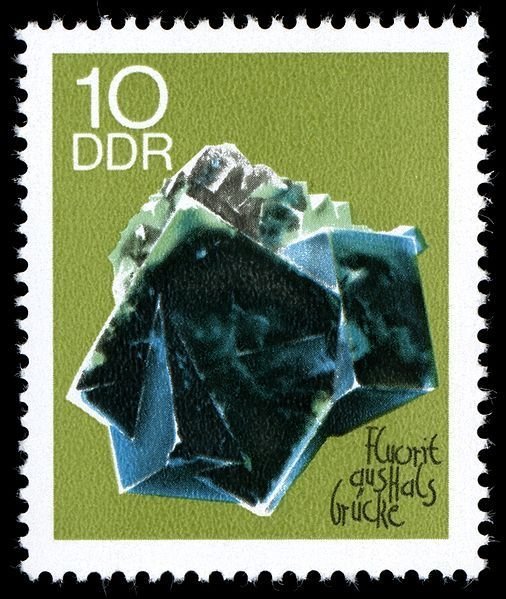
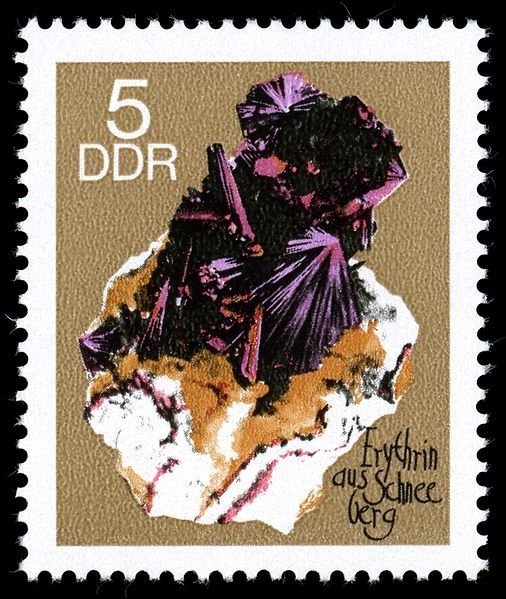
two 1969 DDR stamps depicting fluorite and erythrin
#stamps#postal stamps#postage stamps#stampcollection#collector#ephemera#snail mail#ddr#minerals#fluorite#request fill
70 notes
·
View notes
Text
despite living in a literal cobalt mine they’ll really be like “the only colours are gray. and blue” as if erythrin isnt pink.
1 note
·
View note
Link
Check out this listing I just added to my Poshmark closet: 6 Pairs Heel Cushion Pads Shoe Grip Liner Foot Protection 🤎.
0 notes
Photo

Mineralien Erythrin. Fundort Bou Azzer, Marokko. Hier im Geschäft. (hier: Fossilien Schmuck Mineralien Kunert) https://www.instagram.com/p/CVPzcC_ARC0/?utm_medium=tumblr
0 notes
Photo

Ruby eyeball + Lapis Lazuli = Erythrine
suggested by: @amagnuss
75 notes
·
View notes